01. Uluru-Kata Tjuta National Park – Camp beside the sacred heart
Waking up near Uluru is something you don’t forget. The Ayers Rock Campground, just outside the park boundary in Yulara, offers powered and unpowered sites with hot showers, a swimming pool, and a few creature comforts. But the real show kicks off when the horizon glows pink and Uluru begins its daily colour shift.
Walk the base trail early, take a guided cultural tour with the local Anangu people, and swing out to Kata Tjuta for a hike through the Valley of the Winds. For dinner, grab a bush-tucker inspired meal at Talinguru Nyakunytjaku or bring your own and eat under stars so sharp they feel carved into the sky.
Unmissable: Bruce Munro’s Field of Light—50,000 solar-powered globes blooming in the desert darkness. Mesmerising.
02. Kakadu National Park – Camp wild in ancient country
Kakadu isn’t just wild, it’s mythic. At Gunlom Campground, you’ll pitch your tent below a cascading waterfall with views out over the trees. The infinity-edge rock pool at the top? Instagram’s not worthy.
Kakadu covers nearly 20,000 square kilometres, blending rock art galleries dating back 20,000+ years with landscapes shifting from floodplains to escarpments. Head to Ubirr at dusk for sweeping floodplain views and see the sunlight dance across 30,000-year-old paintings.
Don’t expect creature comforts—many sites are basic, with drop toilets and bush showers. But the connection to Country here runs deep. Bring binoculars, crocodile sense, and plenty of water.
Wild pick: Join a Yellow Water cruise at dawn. Crocs, jabirus, buffalo and more. Nature’s theatre.
03. Flinders Ranges National Park – Red rock, rich stories
You’ll hear them before you see them: the mournful wail of a distant wind bouncing off red cliffs. The Flinders Ranges aren’t your typical Outback—they’re more textured. Camp at Wilpena Pound Resort, or go rough at Bunyeroo. Either way, it’s all jaw-dropping.
Hike St Mary Peak if you’re fit—it’s long and steep, but delivers views across the entire basin. For something more laid-back, the Brachina Gorge Geological Trail is a drive-through history lesson covering half a billion years. The road crunches beneath your tyres, past wallabies and emus picking their way through gnarled gums.
Cultural gem: Nilpena Station has recently opened ancient fossil beds to visitors—some of the oldest multicellular life on Earth.
04. Karijini National Park – WA’s ancient water wonderland
Out in WA’s Pilbara, Karijini feels like a secret garden carved into ironstone. The gorges here are deep, cool and echoey—perfect after a long dusty drive. Stay at Dales Gorge Campground or the eco-retreat near Joffre Falls if you prefer glamping under canvas.
Walk down into Hancock Gorge and do the Spider Walk—yes, it’s as narrow as it sounds. Swim in emerald pools at Fern Pool or Circular Pool. This land is 2.5 billion years old and it shows—striped cliffs, deep red rock, and ghost gums standing defiant in the heat.
For the brave: Book a guided canyoning tour into restricted Class 6 gorges—an absolute adrenaline rush.
05. Purnululu National Park – Dome dreams in the Bungle Bungles
Hidden for most of whitefella history, the Bungle Bungles look like something a sci-fi set designer dreamed up. Towering striped domes rise from a spinifex plain, and the park’s remoteness is half the charm. You’ll need a high-clearance 4WD and some patience on the long, corrugated access track.
Camp at Walardi or Kurrajong sites—both basic, with drop toilets and no showers. But who needs fancy when you’ve got Cathedral Gorge’s acoustics or the cool shade of Echidna Chasm? Time your hikes for early morning or late arvo—midday sun bakes this place.
Scenic idea: Splash out on a chopper flight at sunrise. The domes from above? Unreal.
06. Mungo National Park – Ghost stories in the clay
This is a place where silence rings loud. The Walls of China, glowing under a setting sun, look like the surface of another planet. Camp at Main Camp or Belah Campground and prepare to go deep—into time, culture, and the concept of “what once was”.
Mungo is part of the Willandra Lakes Region, where Mungo Lady and Mungo Man were found—human remains over 40,000 years old. A guided tour here is a must. The park’s Indigenous custodians share stories layered in the sand itself.
Mind-blower: You can still see fossilised human footprints embedded in the clay—among the oldest on the planet.
07. Kings Canyon – Rim walks and red walls
Watarrka National Park’s Kings Canyon often gets overshadowed by Uluru, but that’s a mistake. The 6km Rim Walk is one of the best treks in the country, weaving past sandstone domes, sheer cliffs, and secret waterholes.
Camp at the Kings Canyon Resort (or go fancy with their glamping tents) or free camp at nearby Kathleen Springs if you’re self-sufficient. Sunrise over the canyon rim is worth the 5am wake-up.
Oasis moment: Halfway through the hike, descend into the lush Garden of Eden—a fern-filled sanctuary in the middle of a desert.
08. Cape Range National Park – Camp where reef meets range
Just when you thought the Outback was all red dust, along comes Ningaloo. Camp at Osprey Bay or Mesa and you’re just steps from turquoise water and one of the world’s best fringing reefs.
Snorkel at Turquoise Bay (strong current, but spectacular) or hop on a glass-bottom boat. Inland, the dry canyons of Mandu Mandu or Yardie Creek contrast sharply with the vibrant reef. You’ll see reef sharks, turtles, and—if you time it right—whale sharks from March to July.
Keep an eye out: Black-footed rock wallabies clamber through the cliffs at Yardie Creek, best spotted at dawn.
09. Litchfield National Park – Darwin’s lush backyard
Just a couple of hours south of Darwin, Litchfield packs a lot into a small space. Florence Falls and Wangi Falls are classic NT swim spots, but there’s more if you dig a little deeper.
Camp at Florence Falls, Buley Rockhole or Walker Creek. Each has shady bush sites with easy access to plunge pools and forest trails. Don’t forget to visit the giant termite mounds – some are over six metres tall and older than your car.
Bushwalk bonus: Hike into The Lost City, a strange formation of sandstone towers that look like ancient ruins built by giants.
10. Simpson Desert – Remote beauty and warm springs
If you want remote, the Simpson delivers. Dalhousie Springs Campground is the best base. After the long haul in, you’ll slide into a 38°C spring-fed pool fringed by reeds, with nothing but desert and silence for company.
Crossing Big Red, the highest of the Simpson’s 1,100 dunes, is a must-do for 4WDers. But even a walk up one of the smaller dunes nearby delivers unbeatable views and a sense of total stillness.
Essential advice: You’ll need a Desert Parks Pass, solid preparation, recovery gear and self-sufficiency. This is real Outback.
- Go swimming in Litchfield Park
- Kings Canyon – camp and walk
- Charles Knife Gorge, Cape Range National Park
- Explore the Simpson
- Be adventurous and cycle the loop road over two days.
- Kakadu, every day is an adventure
Wrap-up: So, why go?
Because Outback camping reconnects you. To the land. To the people who’ve lived here for tens of thousands of years. And to yourself. No signal, no traffic, no rush—just stars, silence, and that unmistakable crunch of boots on ochre earth.
Each of these spots brings something unique: ancient geology, sacred stories, swimming holes, wild hikes, and night skies that will ruin you for city life.
So pack the gear, check the weather, grab a jerry can, and head bush. Australia’s red heart is calling.

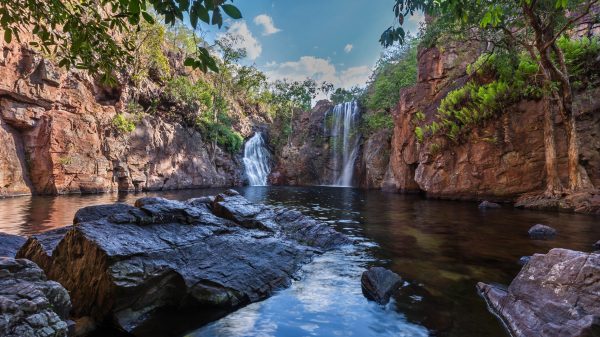
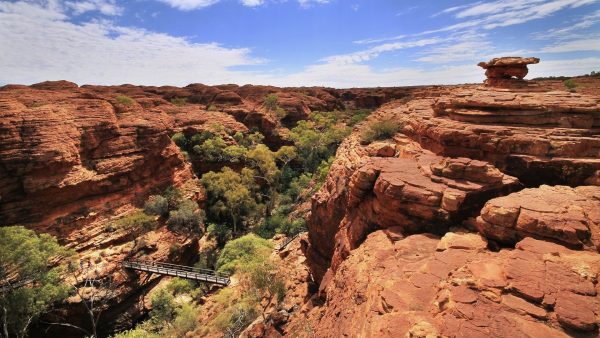

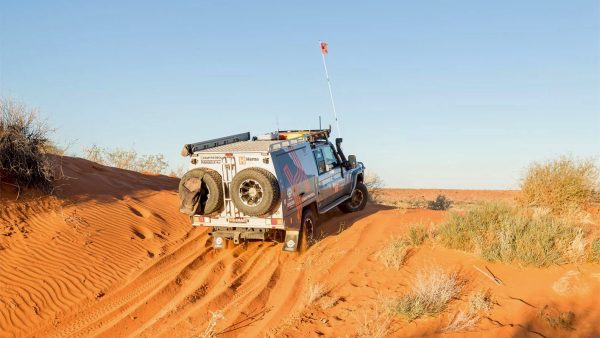
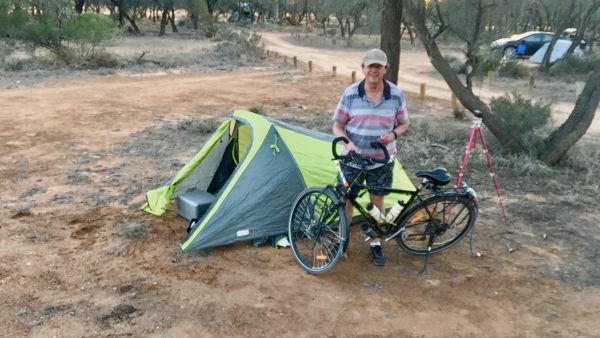
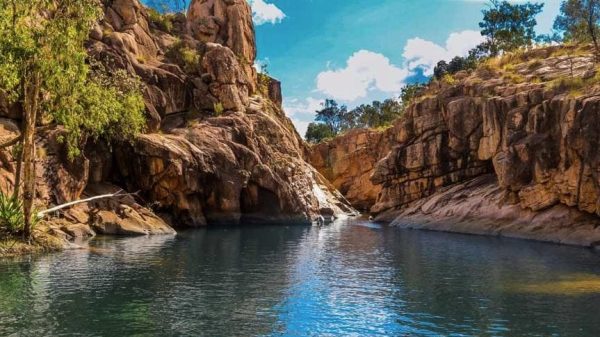
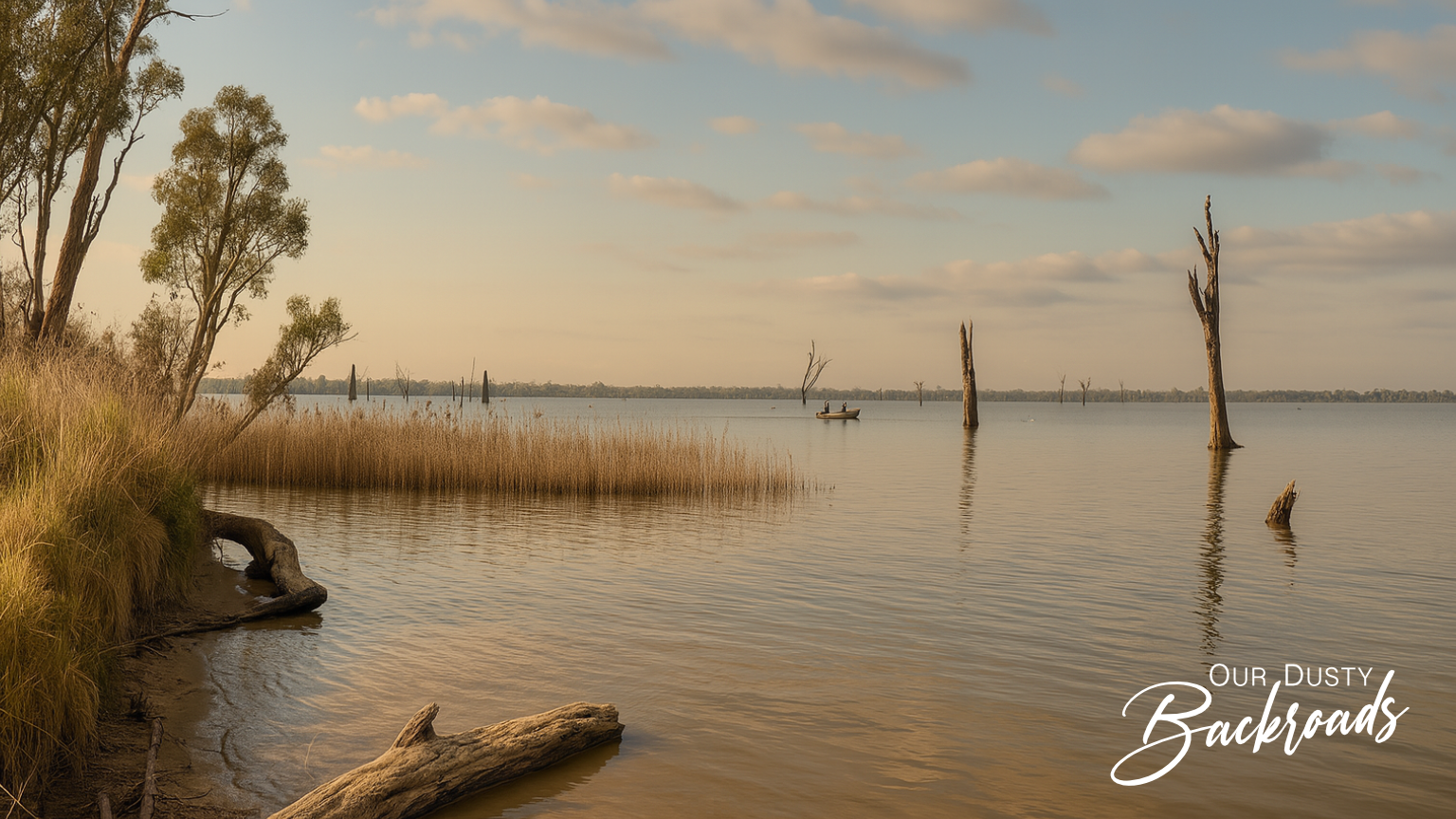











Leave A Comment